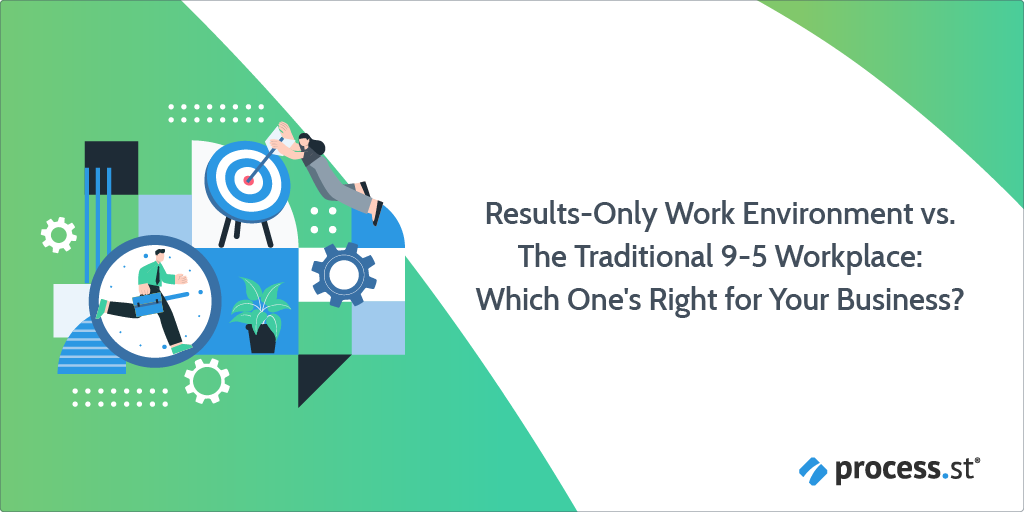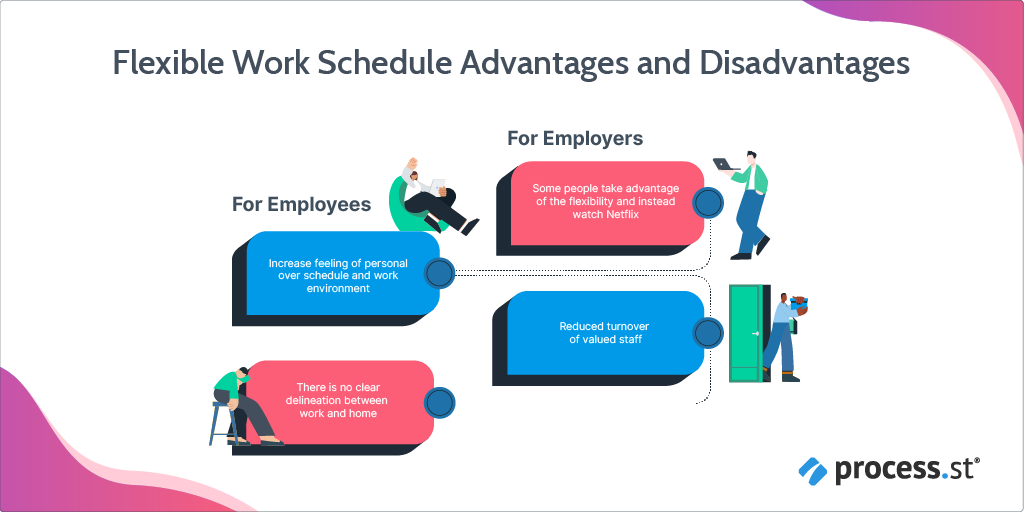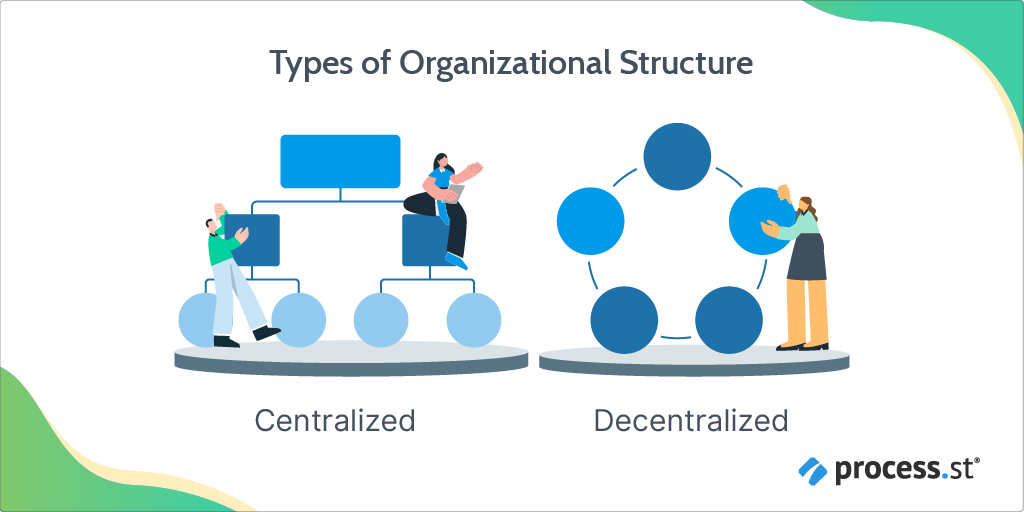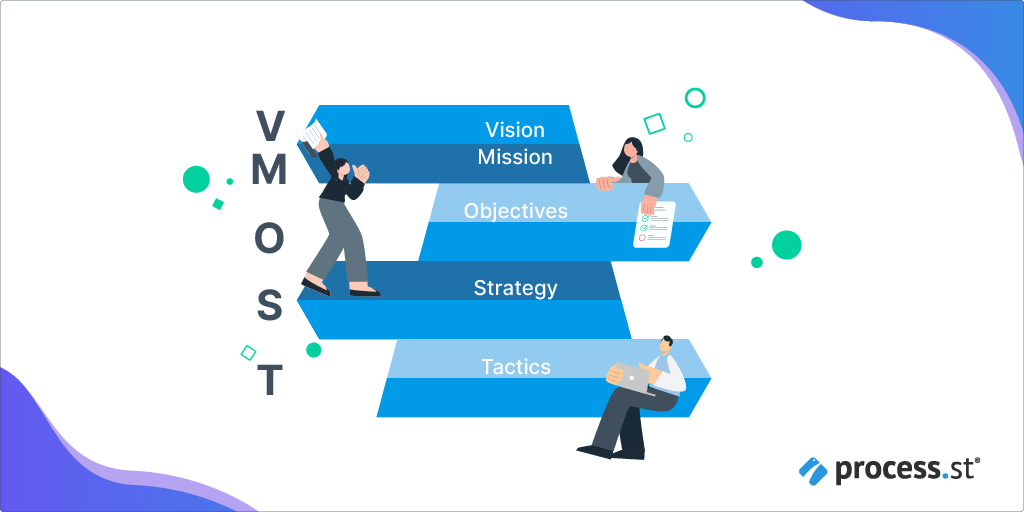
Business models used to be pretty simple. From customer-facing storefronts to buzzing offices to call centers, most operated with standard 9-5 business hours. Some of them still do.
But now, there’s a new wave in business that’s motivating entrepreneurs to consider a results-oriented work environment instead. We have the pandemic and the great resignation to thank for that.
The problem?
Picking the right model isn’t always straightforward. Businesses have to analyze their standard operating procedures, long-term vision, client needs, chain of command, and more before making a decision.
If you’re on the fence about which business model to choose for your business, we have just the article you need to make a decision in line with your goals.
In today’s article, we’ll cover:
- What does a results-only work environment look like?
- What does a traditional 9–5 workplace look like?
- How to discover if a results-only environment or a traditional 9–5 is best for your business
What does a results-only work environment look like?
A results-only work environment puts the responsibility in the team member’s hands.
Team members can choose their work hours, have flexible time off, and choose what projects they work on.

The results-only work environment model (also called ROWE) was developed by Jody Thompson and Cali Ressler, the founders of CultureRx, in 2008.
In this model, businesses measure team members by their performance and results, not how many hours they work. With complete autonomy over their projects, team members are free to choose when and how they’ll meet their goals.
Some examples of businesses that use ROWE include project-based businesses, agencies, and teams that work with freelancers.
What does a traditional 9-5 workplace look like?
In a traditional 9-5 business model, team members have a list of responsibilities to fulfill in a specific order or in a specific way. They also have less project autonomy, if any autonomy at all. And you guessed it; they clock in and out at specified times – typically 9-5.
In this model, businesses measure team members by their daily responsibilities and how many hours they work. With less autonomy over their projects, team members are limited in how they manage their work and time.
Some examples of businesses that use the traditional 9-5 model include customer service companies, banking centers, and routine medical offices.
How to discover if a results-only environment or a traditional 9–5 is best for your business
Here’s how to decide on the best model for your business, step-by-step.
Step 1: Consider your current goals
Before settling on a model, get crystal clear on your goals and priorities.
Ask yourself questions like:
- What does my business need?
- What does my team need?
- What do my customers need?
- What are my short-term goals?
- What are my non-negotiables?
- What are my long-term goals?
Examine your answers and look for patterns. Do you see any common threads?
For instance, you might realize that your short-term and long-term goals focus on customer experience. If this is the case, your goals might be pointing you toward a 9-5 model.
Or you might notice that your team and your clients need flexible work arrangements due to time zone differences. If this is the case, your team and client needs might be pointing you toward a ROWE model.
Step 2: Look over your business processes & operations
After getting clear on your goals, take a close look at your standard business processes and operations.
Are there any potential risks or threats that could impede your day-to-day?
What does a typical workday look like for your business? Is there any flexibility there? Could change be a good thing, or are your systems pretty solid?
For instance, if your business relies heavily on remote work and pristine digital workflows, you may benefit from a ROWE model.
Step 3: Consider your current chain of command
In this step, map out your business’s current chains of command.
Be sure to jot down who reports to whom, if you have any department heads and frontline managers, and which specific teams you have.
Take a close look at your team map. Is there any flexibility there? Are your current chains of command working? Would a decentralized system be more efficient? If so, what might that look like?
Next, imagine that you’ve flipped your business around. If you have a decentralized business, imagine that it’s centralized – and vice-versa.

What questions and concerns come to mind when you imagine this flipped model? What kinds of benefits and ideas come to mind?
Step 4: Think about your customers’ needs
In this step, consider your customers’ needs and how you work with them regularly.
Ask yourself questions like:
- How can each model affect my customers?
- How can my customers benefit or lose from each model?
- Which model shows promise for a better customer experience?
- Which model shows the potential to increase repeat and new sales?
- Which model could better serve customer experience and engagement?
- Could a blend of each model be a better fit for my customers?
Next, imagine what the customer journey would look like if you had a ROWE, a 9–5 model, or a mix of both. What concerns pop up? What potential benefits do you see?
Step 5: Evaluate your hours of operation
Take a look at your current hours of operation.
Do you have a storefront? Do you work online? Is your business hybrid?
What time are you open for business each day, and when do you close? Do you keep irregular office hours? What does that look like?
What about your team – what shifts do they currently work? Do the shifts work well for them, you, and your customers?
Can you split your teams up to accommodate more flexible hours? Or are your current operating times necessary?
Picture how your business could operate if you changed your work hours. Do you think this change would benefit your business, your team, and your customers?
Step 6: Consider the type of work you do
What kind of work do you do?
Do you own a B2B SaaS company? Do you plan weddings and events? Do you run a small screenwriting team?
Summarize what you do in just a few lines.
Next, consider your work type – do you sell products or services? Do you work on or manage projects? Who’s your main customer?
Next, consider how you manage your customers according to the work you do. For instance, do you use a customer relationship management (CRM) platform to track customer satisfaction and retention? Do you use a simple spreadsheet? Do you use digital folders?
If you were to manage your workload using the opposite business model, what would that look like? Would you succeed? What concerns would you have?
Step 7: Assess your long-term business vision
Consider your long-term business vision. What would your vision look like if you used a ROWE model versus a 9–5 model?

What’s at stake for your business long-term if you choose one model over the other?
What milestones would you need to hit to achieve your long-term vision? What business model could help you get there, and how?
Step 8: Ask your people
Sometimes the best wisdom comes from the people who know your business the best: your team.
In this step, set a time to meet with team members and managers who are closest to the action.
Ask them questions like:
- What do you think about our current business model?
- What do you think is missing from our current model?
- Have you heard of the differences between the ROWE model and the 9-5 model?
- Which model do you think could help us become more efficient and successful?
- Which model do you think could help us hit our long-term goals?
- Which model would be the best fit for our customers, our team, and our business?
- What questions and concerns do you have about each model?
To keep your team members engaged in the process of planning and implementing changes in the work environment, consider using employee survey tools that enable you to assess employee engagement/satisfaction, and run pulse surveys and online tests.
Step 9: Review your finances
Next, grab your bookkeeping records and review your finances.
Be sure to take a look at your fixed expenses, variable expenses, savings, budgets, and profit and loss statements.
Next, create a chart notating any opportunities you may have to increase profit and decrease losses and expenses. Then, consider if a particular business model can help you take advantage of those opportunities.
For instance, if your office rental costs $12k a month and most of your clients do business with you online, then you might benefit from a remote ROWE model.
Step 10: Test each business model
By now, you should have a better idea of how each business model may be able to serve your business. But to truly understand which model is best for you, we recommend testing each of them.
When planning the trial runs, consider dedicating a block of time to plan, implement, and analyze your tests. That might mean hosting a weekend test session, trying it live (at your own risk), or closing up shop for a few days so you can focus on testing.
During testing, make sure to take notes and track your results. Ask your team to do the same.
Step 11: Meet to discuss the pros/cons of each model
When the trial runs are over, meet with your team to discuss the pros and cons of each model.
To start, ask your team to lay out all of their concerns.
For instance, in a ROWE setup, your team might be concerned about limiting insider threats and security breaches. In a 9-5 setup, your team might be concerned about working needless hours.
Next, ask your team for positive feedback about each business model — what worked and what didn’t? Which model helped them feel more engaged and productive with their work? Which model reduced their engagement and productivity levels? Why?
Step 12: Finalize your decision
Finally, have one last meeting with your team to finalize your decision. At the meeting, come ready with a potential action plan for each business model.
Ask your team for feedback on your action plan and if they’d recommend adding or taking something away.
Creating a plan and checklist together can help you set up your model faster and transition the team smoothly.
Whichever model you choose, make sure to look into the legalities, structures, and privacy laws associated with it. Legal requirements vary depending on the industry to are in and depending on the type of data your business collects, are different regulations you need to adhere to.
Data privacy laws provide users with the right to consent and decide how their personal data will be used and collected. Whether you decide to establish a ROWE or standard 9-5 working environment, you will want to analyze operational data in order to make a data-driven decision, including customer data, you need to make sure you have a privacy policy.
The world of data laws and data privacy is constantly changing but for most businesses, you are required to develop a comprehensive privacy policy that is transparent on how data will be collected, sold, and shared. Consider using a privacy policy generator to make sure your business stays in compliance to avoid any issues that might come up later.
ROWE vs. 9-5: Final thoughts
Business models used to be straightforward. From storefronts to offices to call centers, working 9-5 was the norm.
But thanks to the pandemic and the great resignation, there’s a new wave in business causing entrepreneurs to rethink the 9-5 approach.
Does your company follow the ROWE or the traditional 9-5 model? Are you considering a switch? Let us know in the comments below!

Joanne Camarce is a digital marketer focused on growing and strategizing B2B marketing and PR efforts. She loves slaying outreach campaigns and connecting with brands like G2, Wordstream, Process Street, and more. When she’s not wearing her marketing hat, you’ll find Joanne lost in the world of Japanese music and art, or just being a dog mom.







Oliver Peterson
Oliver Peterson is a content writer for Process Street with an interest in systems and processes, attempting to use them as tools for taking apart problems and gaining insight into building robust, lasting solutions.